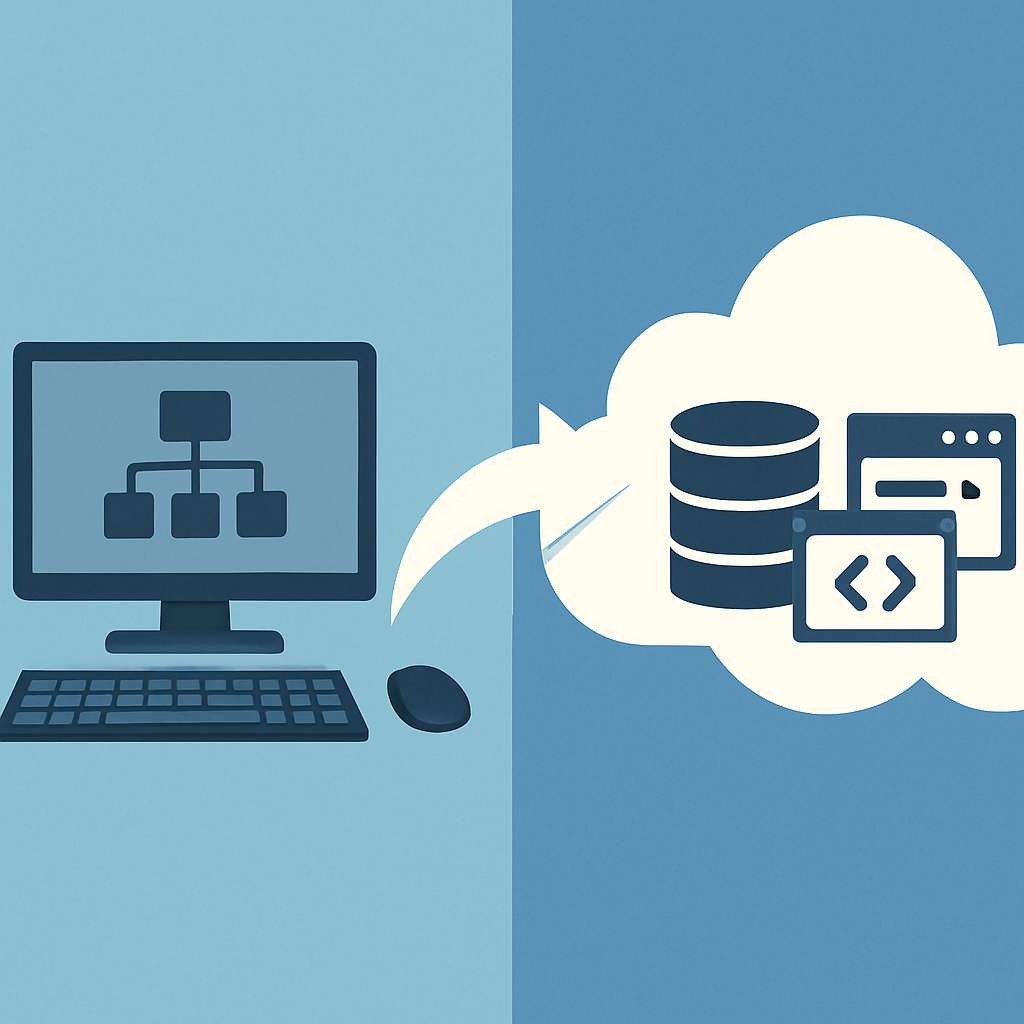
Before embarking on any cloud migration journey, companies need a clear understanding of their existing infrastructure. This involves:
Inventory audit: Catalog all hardware, software, and databases.
Performance review: Identify bottlenecks, maintenance costs, and risks.
Business alignment: Determine which systems are mission-critical and how they support business goals.
Challenge: Legacy systems may be poorly documented or deeply integrated with business processes.
Solution: Collaborate with internal IT teams and external consultants to conduct a comprehensive assessment.
Every business has unique goals, and your cloud migration strategy should reflect that. Key decisions include:
Cloud model: Public, private, hybrid, or multi-cloud?
Deployment strategy: Lift-and-shift, replatform, or refactor?
Security and compliance: How will you meet Polish and EU data protection laws?
Challenge: Misalignment between IT and business strategy can lead to costly rework.
Solution: Involve stakeholders from different departments early in the planning process to ensure alignment.
Your cloud provider will play a critical role in your digital transformation. Leading providers like AWS, Microsoft Azure, and Google Cloud offer a wide range of services, but not all are created equal.
Evaluate providers based on pricing, compliance support (e.g., GDPR), local data centers, and customer service.
Consider local partnerships with Polish IT firms that specialize in cloud migration and can provide ongoing support.
Challenge: Vendor lock-in or underestimating total cost of ownership.
Solution: Conduct a detailed cost-benefit analysis and explore multi-cloud options if flexibility is a priority.
Moving to the cloud is as much about people as it is about technology. Prepare your workforce by:
Investing in training: Upskill IT staff and end-users on cloud platforms.
Promoting a digital culture: Encourage innovation, agility, and continuous learning.
Change management: Communicate clearly and often about what the changes mean and why they matter.
Challenge: Resistance to change and lack of cloud knowledge.
Solution: Provide real-life success stories and hands-on workshops to demystify the cloud.
A phased approach minimizes risk and allows for course correction. Start with:
Low-risk applications or services as a proof of concept.
Data backup and storage migration — often the easiest first step.
Critical systems once your team has experience and confidence.
Challenge: Unexpected downtime or data loss.
Solution: Use robust backup procedures, test thoroughly, and ensure rollback plans are in place.
Post-migration, the journey isn’t over. The cloud offers tools and analytics to optimize performance and reduce costs. Your tasks now include:
Performance monitoring to ensure uptime and efficiency.
Cost tracking using tools provided by your cloud vendor.
Iterative improvements as your business evolves.
Challenge: Neglecting optimization can lead to rising cloud costs.
Solution: Set up automated alerts, regular audits, and continuous integration/continuous delivery (CI/CD) pipelines.

For Polish enterprises, transitioning from legacy systems to the cloud is not just a technical upgrade—it’s a strategic imperative. By following a structured approach, addressing organizational and technical challenges, and maintaining a clear focus on business value, companies can unlock the full potential of the cloud.
Whether you’re a large corporation or a growing SME, the path to digital modernization begins with a single step — and now you have the map.
Have questions or need support with your cloud migration? Contact us today or visit our website to learn more about how we help Polish businesses make the move to the cloud.

To provide the best experiences, we and our partners use technologies like cookies to store and/or access device information. Consenting to these technologies will allow us and our partners to process personal data such as browsing behavior or unique IDs on this site and show (non-) personalized ads. Not consenting or withdrawing consent, may adversely affect certain features and functions.
Click below to consent to the above or make granular choices. Your choices will be applied to this site only. You can change your settings at any time, including withdrawing your consent, by using the toggles on the Cookie Policy, or by clicking on the manage consent button at the bottom of the screen.